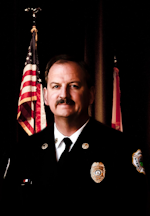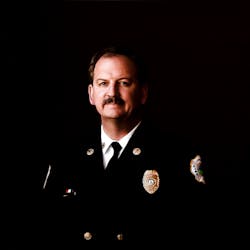Fire and EMS crews are putting much more emphasis on efficiencies and safe scene management. Incidents in densely populated areas with mass gatherings, transportation mishaps and ongoing acts of violence frequently mean more patients than first-due crews can handle. In the chaos of triaging and ensuring that all patients are assessed and transported (if necessary), some of the small details can be missed. The scrutiny of that is more commonly falling on incident commanders (ICs) and EMS officers for their decisions are now increasing the risk management issues revolving around EMS. It is safe to say that if someone is hurt at the fault of a crew member, there will be litigation.
Crew resource management puts a strong emphasis on the use of checklists. For rare or infrequent events that are high risk, a checklist, or in this case a tactical worksheet, can help maintain consistency and avoid errors or omissions. When under stress, some details can get missed as the brain processes information. In an overload situation, the brain will set a course to adapt to the overload by whatever means possible. If you’re a science person, you know this occurs in the pre-frontal cortex, which is where the role of executive functions—organizing, decision making and reasoning—takes place. The stress hormones target this area and repeated exposures cause atrophy or damage over the long term. A tactical worksheet helps to organize those thoughts, reduce the stress, increase your focus and provide a guide for recognition primed decision making (RPD).
Tactical worksheets are commonly used for structure fires, and frequently a generic incident command system (ICS) form can and will be used for all hazards and EMS incidents. Worksheets and checklists are being used everywhere, from aviation to the operating room, where high risk and errors need to be avoided. For a fire captain or battalion chief who is not always intimately involved or aware of all the EMS resources in the system or region, a more detailed EMS incident worksheet makes sense. This is also valuable in systems where you may not have the benefit of an EMS officer or supervisor.
Making the list
An EMS tactical worksheet has a few necessities. First, as is common with most tactical worksheets, the name and location of the incident must be included. A run number may be added later if you’re adding this to the report system. Second, an organizational chart needs to be included, preferably one that lines out the basic EMS functions.
The third item on the tactical worksheet is a list of units that would typically get sent on a first-alarm medical call. While this is not standard in a lot of communities, it is becoming increasingly important to organize this through the dispatch centers. Not having enough resources during a mass-casualty incident (MCI) is a recipe for disaster. It will lead to more stress on scene and opens the IC up to questions about tactics, especially if there is a delayed assignment where immediate care could have made a difference. While most ICs understand where their resources come from, mutual aid resources are often not known to the IC.
Fourth on the list would be benchmark buttons (as seen in the Sample Worksheet), going across the page horizontally from left to right or top to bottom allowing an IC to check off each item in a logical fashion of how an MCI should flow. Fifth is a primary and secondary triage score for the type and number of patients. This is essentially the most critical factor as it dictates the number of ambulances needed, information for the hospital staff and accounts for each patient. Since it is common to re-triage or reclassify patients when more resources arrive, an EMS tactical worksheet should have multiple areas for several rounds of triage.
The sixth element of a worksheet is used to track a limited number of patients (often another full-page sheet is used for this). Tracking is an essential function to ensure patient accountability and even distribution of patients across a health care system. Lastly, additional items such as the staging area locations, command staff and hospital phone numbers are key. Hospital landlines are important since cellular systems may be overloaded quickly and radio traffic significant.
A valuable tool
There are more benefits for an EMS tactical worksheet than just reducing your stress and gaining efficiencies. It becomes a great training tool for simulations to reinforce muscle memory on events. It standardizes the response. It provides a tracking sheet to assist the report writer on key pieces of information for the RMS. Most importantly is the ability to have a record and checklist to match against in a post-incident analysis to improve future performance. Download and edit a copy of the Sample Worksheet here.

Bruce Evans | Fire Chief
Bruce Evans, CFOD, SEMSO, NRP, MPA, is the fire chief for the Upper Pine River Fire Protection District, which is located outside of Durango, CO. He retired as an assistant chief from the North Las Vegas Fire Department after serving 27 years in Southern Nevada’s Fire and EMS system. Evans has been a course developer for many of the National Fire Academy curriculums and serves as a technical writer. He is the recipient of the prestigious 2010 James O. Page EMS Achievement Award and was awarded the NAEMT Presidential Leadership Award in 2014. The Colorado Governor appointed Evans to the State Emergency Medical and Trauma Advisory Committee in 2014. He is NAEMT’s liaison to the National Academies of Medicine preparedness committee and coauthored texts on EMS management and crew resource management and wrote a text on EMS quality improvement.






